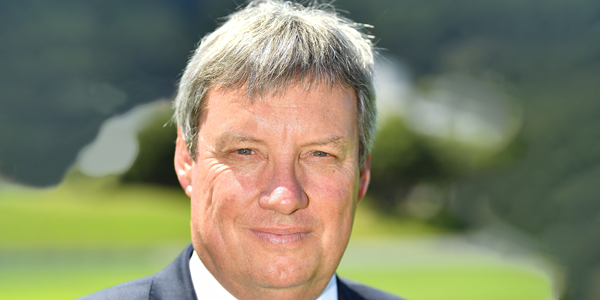Quick takes
Governance implications – 2024 HYEFU and Budget Policy Statement
Financial updates from Treasury may impact not-for-profit boards.
A ‘horizontal governance’ initiative by Sport New Zealand is helping inexperienced chairs step up to the plate.

Forty-five National Sports Organisations (NSOs) and Regional Sports Trusts (RSTs) across New Zealand are being connected and arming themselves with the tools and confidence to meet the challenges and risks faced in boardrooms.
‘Vertical governance support’ – one-on- one Sport New Zealand (SNZ) partner relationships – is well-established in the sports sector, but SNZ launched a governance community-building initiative in April 2021 focused on ‘horizontal governance support’, contracting experienced sports administrator and former New Zealand cricket star Martin Snedden as the project designer and leader.
Snedden is facilitating the building of relationships between participant chairs and creating the opportunity for them to share experiences and learn from each other. The 64-year-old has been given a free rein by SNZ–there is no tried-and-tested recipe for this horizontal governance model.
“It’s a real test and learn project in the sense that I experiment quite a bit and I’m not too worried if some things don’t work. It’s really just about trying various things. I’ve backed my own instincts that this project is helping lift quality of sports governance,” says Snedden, who is chair of New Zealand Cricket and on the board of the International Cricket Council, and an experienced former CEO.
“It’s extremely important we continue to build the strength of sports governance in New Zealand.”
At the heart of the project is a framework enabling people to participate in a way they enjoy without feeling obligated or burdened.
“I’m really conscious that almost all of the chairs are volunteers, each giving huge amounts of time and energy to their organisations. Without exception, they are good people trying to do a great job. In the most part, they’ve accepted the position of chair and they haven’t really quite known what they’re walking into. Once they are in the role, they suddenly realise they’ve bitten off a hell of a lot. It is a tough job and often very invasive.
“It’s been a real education for me. One of the things I’ve learnt is there is no correlation between the size of an organisation and the quality of its governance leadership. I am seeing fantastic examples of people who are really good governors looking after small sports in New Zealand. And they have a real appetite to learn so they can do their jobs even better.

Martin Snedden
“There’s no hierarchy within our group. If the sport you come from happens to be rugby or cricket, that doesn’t put you in any more important a position than table tennis or the pony clubs.”
Snedden says he is not trying to replicate or duplicate any governance models. SNZ, through the likes of governance and planning consultant Julie Hood, already offers excellent support to its partner organisations. Creating a strong aligned link with SNZ’s governance programme is critically important.
Much of what Snedden does is to help chairs enjoy the role, placing a strong emphasis on further development of “soft governance” skills.
“My philosophy is to concentrate on relationships and what I call governance EQ. It’s not strict formal learning, but more relaxed, situational learning opportunities. We feed off each other’s experiences. With 45 chairs, or chair designates, there’s a lot of experiences that people have had – good and bad. And we can often learn as much from the least experienced chairs as from the most experienced.”
Snedden says an emerging example of the value of horizontal governance is biculturalism, including the Treaty of Waitangi and relationships with Māori. “It’s an incredibly tricky area if you’re trying to do it by yourself,” he says.
“Embracing biculturalism in a genuine and effective way is not a one-size-fits- all, cut and paste exercise. My role is to facilitate the sharing of stories from various chairs and boards grappling with this, drawing out their experiences, flushing to the surface clues about ways to tackle this opportunity and also awareness of some of the pitfalls that are avoidable.”
From a first-year emphasis on creating relationships, trust within the group is strong and chairs are now comfortable sharing information – including their problems – with one another, and seeking help knowing they are operating in a safe and confidential environment. “That’s what this is about,” Snedden says, “getting people talking, listening, and doing things with each other. As a group, we identify topics of strong common interest. There’s a lot of stuff that is common to everyone.”
The new Incorporated Societies Act 2022 is a current focus, with more than 9,000 entities in the sports sector needing to re-register by March 2026. “We are using our group to take a coordinated approach to how organisations at a national and regional level, and even at club level, can move towards a position where they re- register under the new act in a timely and legally compliant manner.
“Instead of NSOs all going off and getting their own legal advice – and getting a million lawyers involved – we are striving to create a collective approach where we can hold each other’s hands as we gradually work our way through this. The new act applies to every single incorporated society so everyone needs help.”
“Good chairs know you’re always learning and you have got to open yourself up to that. I’ve seen a really big shift in our group to absolutely accepting this, and enjoying it too.”
Snedden, who was previously CEO of New Zealand Cricket then Rugby World Cup 2011, says that, in many ways, sports sector governance is no different to any other sector. Governance is an art to be learnt, not something you can just develop instinctively.
“I regularly emphasise this to our group. In the sports sector you have a raft of chairs of NSOs and RSTs who are highly skilled and have really good daytime jobs. But that’s not enough. Being a really good CEO or running a successful business isn’t teaching you enough about governance. Chairs really have to commit to continuous governance learning. And sometimes that’s hard for people who are confident and successful in their day jobs – and lives.
“In my time in sports governance I have seen many examples of resistance to learning – chairs and directors thinking they know enough. Good chairs know you’re always learning and you have got to open yourself up to that. I’ve seen a really big shift in our group to absolutely accepting this and enjoying it too.”
Many of the issues the group discusses are people related and Snedden says the CEO/ board relationship is critical. “Clarity of roles and mutual expectations is vital, as is having empathy for the CEO. Chairs have to be able to look at it through the eyes of a chief executive as well as through your own eyes as board chair,” Snedden says.
“Likewise, you are going to have a lot of boards with difficult directors in their midst. And there’s a risk that you just ignore that and carry on regardless, thereby impeding the board’s ability to function effectively. Some of our conversations have been about finding ways of drawing those disrupters out, understanding what makes them tick and, where necessary, laying down a challenge, testing whether the disruptor is prepared to be a team player or whether they should get out of it.
“We’ve spent some time on how you go about setting up a recruitment process to appoint your directors. How do you ensure you’re searching for skills and experiences that you need within the mix around your board table? And again, we just keep using the experiences that exist within our group. We don’t need to go look much further.”
The push for younger directors is part of Snedden’s vision, including encouraging future chairs to attend huis and meetings when their incumbent chair is busy. “I’ve been gradually building up membership of this group. Once someone comes along, I don’t let them go.” His theory is that if they enjoy governance experiences when they are in their 20s and 30s, it increases the possibility they will stay connected to sport governance during their lifetime.
“You’ve got to find ways of ensuring that you have a diversity of thinking around a board table. But it’s the combination of diversity and inclusion that is critical. Diversity without inclusion won’t work. Diverse thinkers around the board table need to be embraced and empowered to contribute and influence.”
Read more